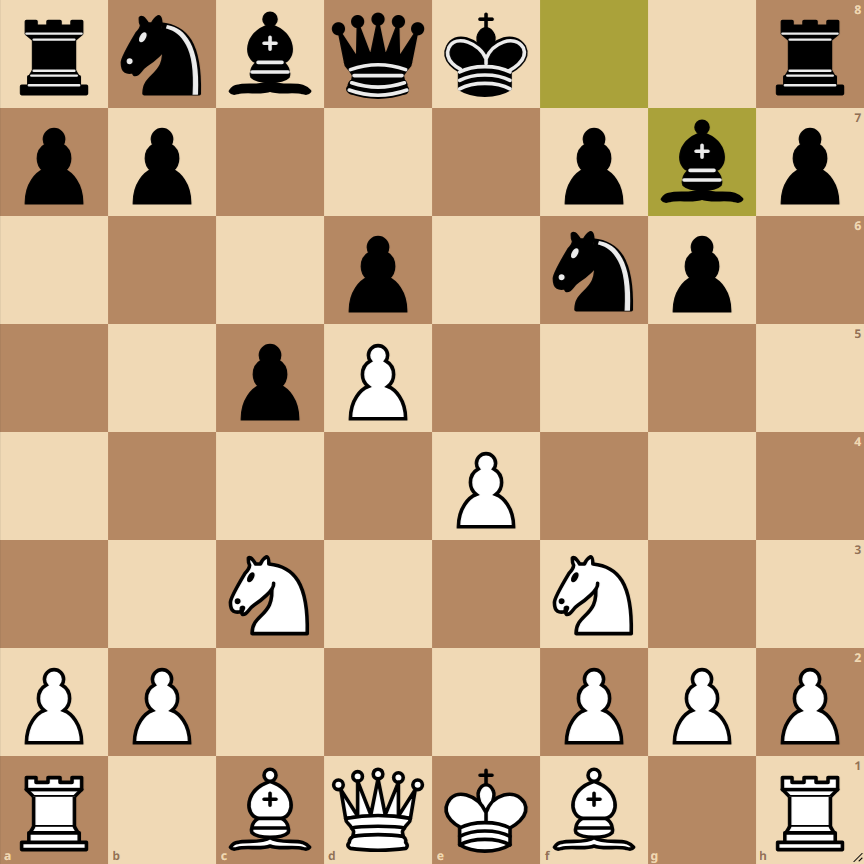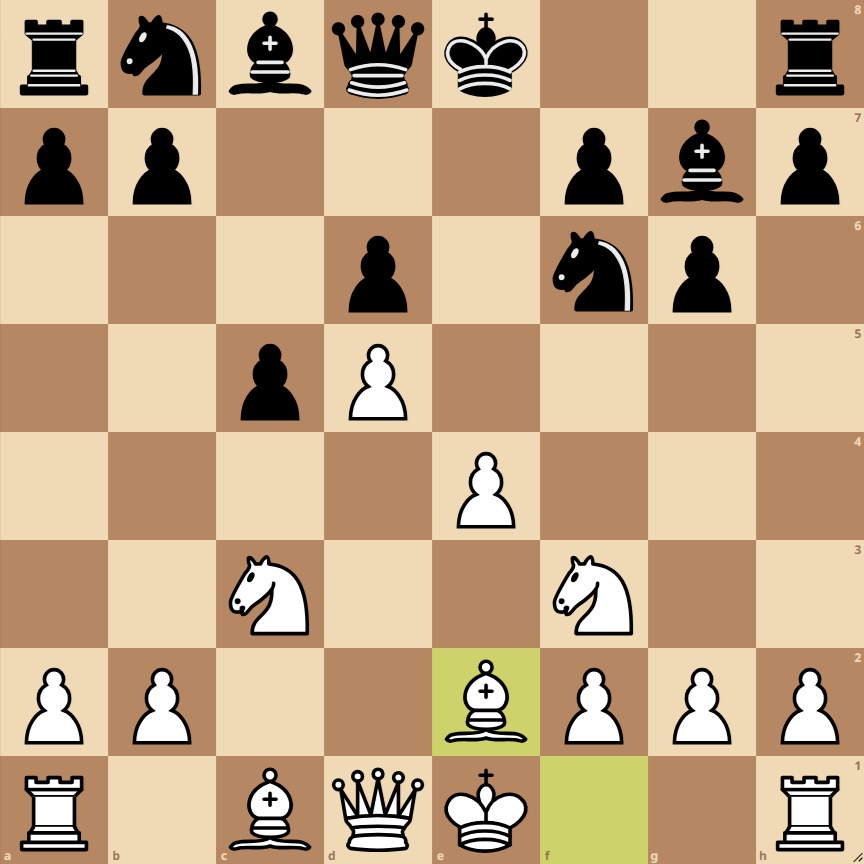How to Play the Benoni Defense, Traditional Classical Variant
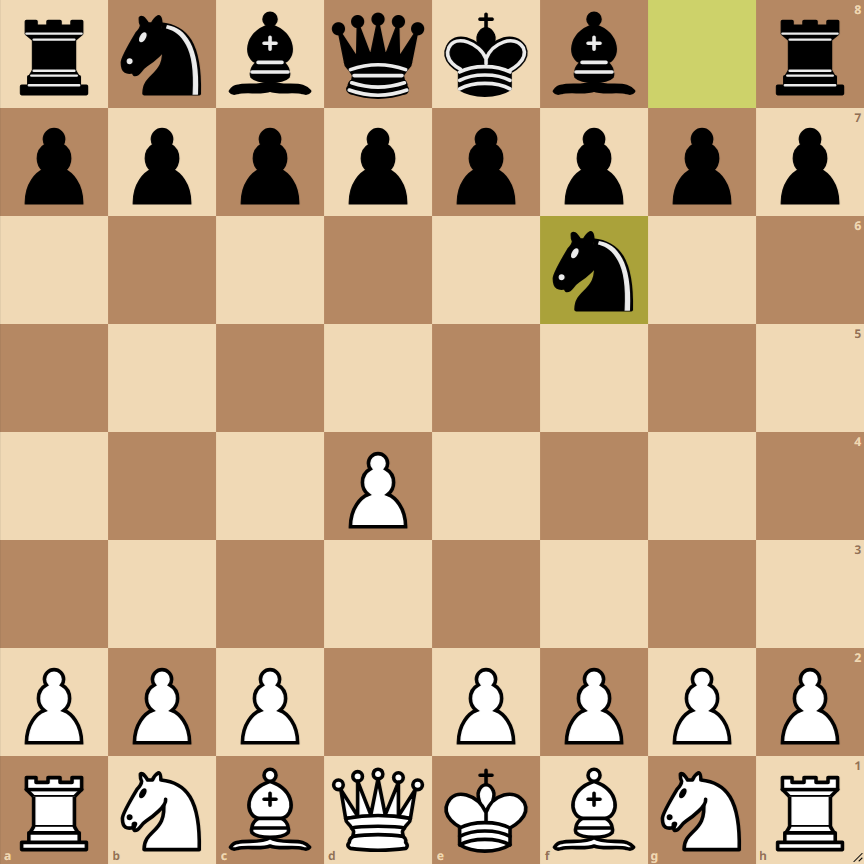
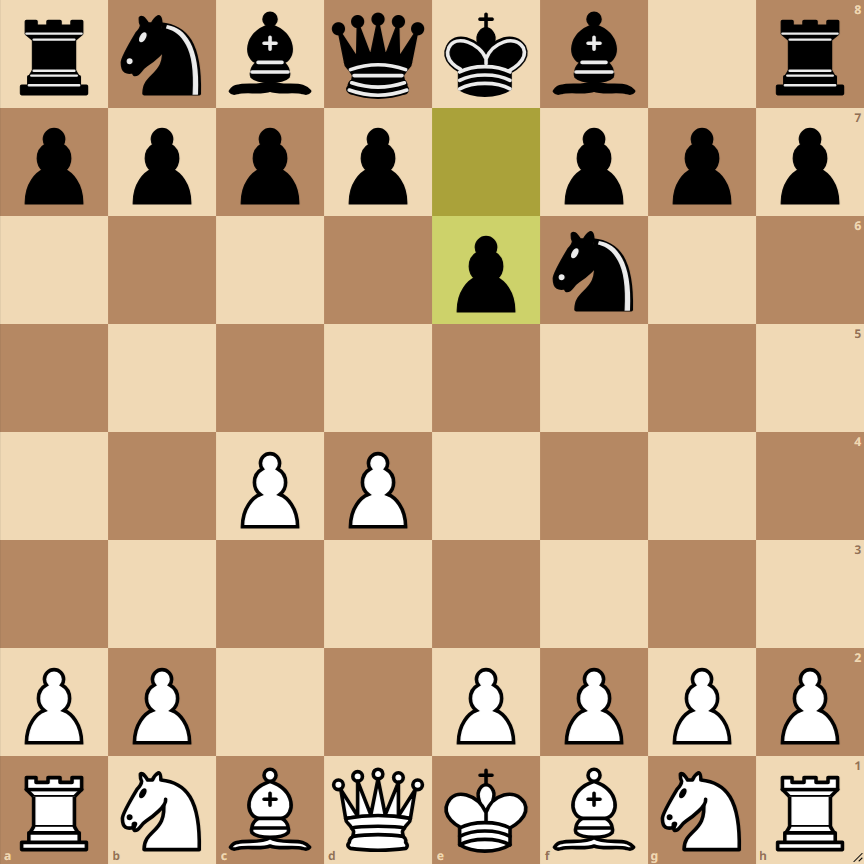
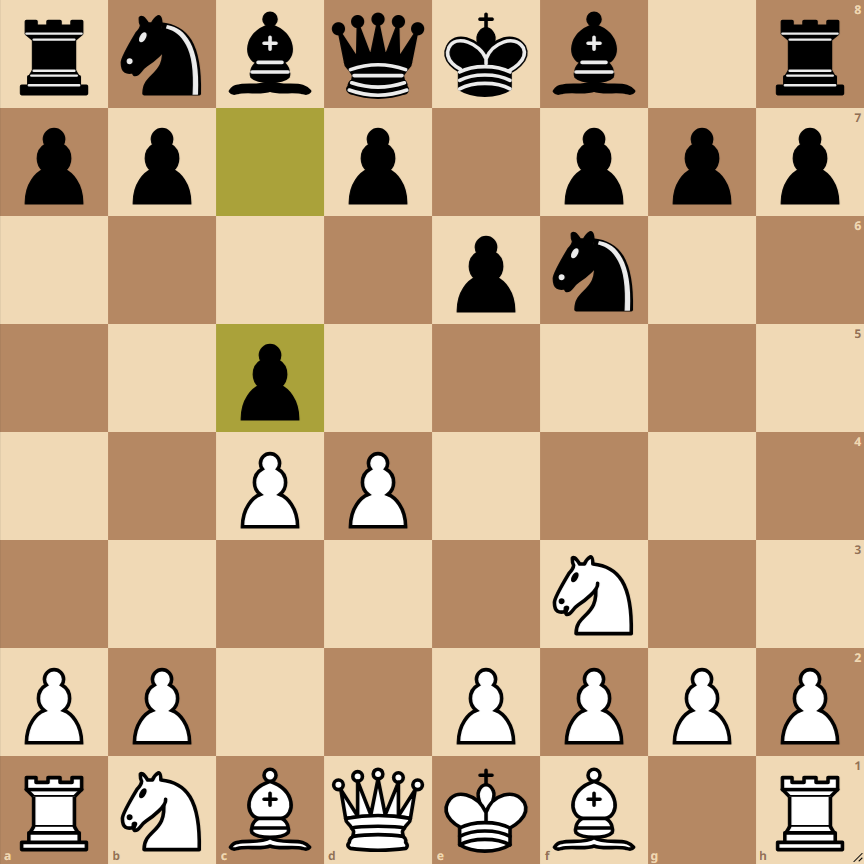
- 1. d4 Nf6: White opens with the queen’s pawn to d4, aiming at the center, while Black responds by developing the knight to f6, preparing to control central squares.
- 2. c4 e6: White plays c4, reinforcing their center and getting ready to gain more space, while Black responds with e6, planning to develop their king’s bishop.
- 3. Nf3 c5: White develops the knight to f3, supporting the d4 pawn and preparing for future kingside castling, while Black counters in the center with c5, challenging the d4 pawn.
- 4. d5 exd5: White advances their pawn to d5, aiming to gain space and restrict the mobility of Black’s pieces. Black captures the d5 pawn, attempting to relieve the pressure in the center.
- 5. cxd5 d6: White recaptures the pawn with the c pawn, maintaining central tension and opening lines for their queen’s bishop. Black plays d6, supporting their c5 pawn and preparing to develop their bishop.
- 6. Nc3 g6: White develops another knight to c3, increasing their central control and preparing a kingside expansion. Black responds with g6, planning to fianchetto their king’s bishop.
- 7. e4 Bg7: White plays e4, dominating the center and preparing the way to develop their king’s bishop. Black fianchettos their bishop to g7, exerting pressure on the center along a long diagonal.
- 8. Be2: White develops their bishop to e2, preparing for kingside castling and protecting their king while maintaining flexibility in the center and kingside.
Variants of the Benoni Defense, Traditional Classical Variant
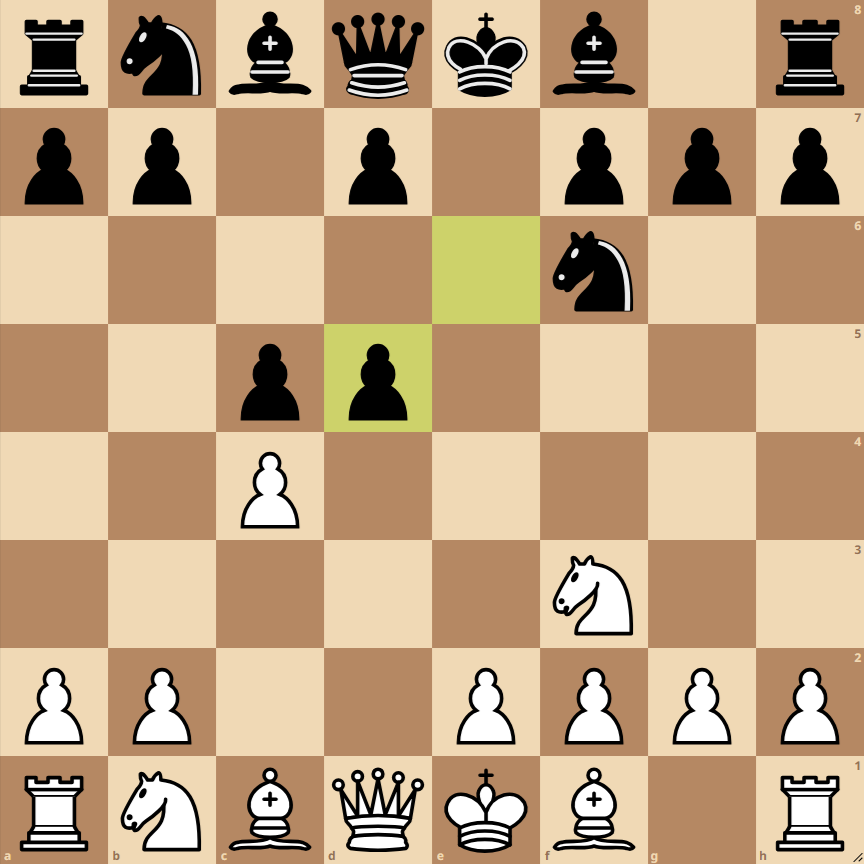
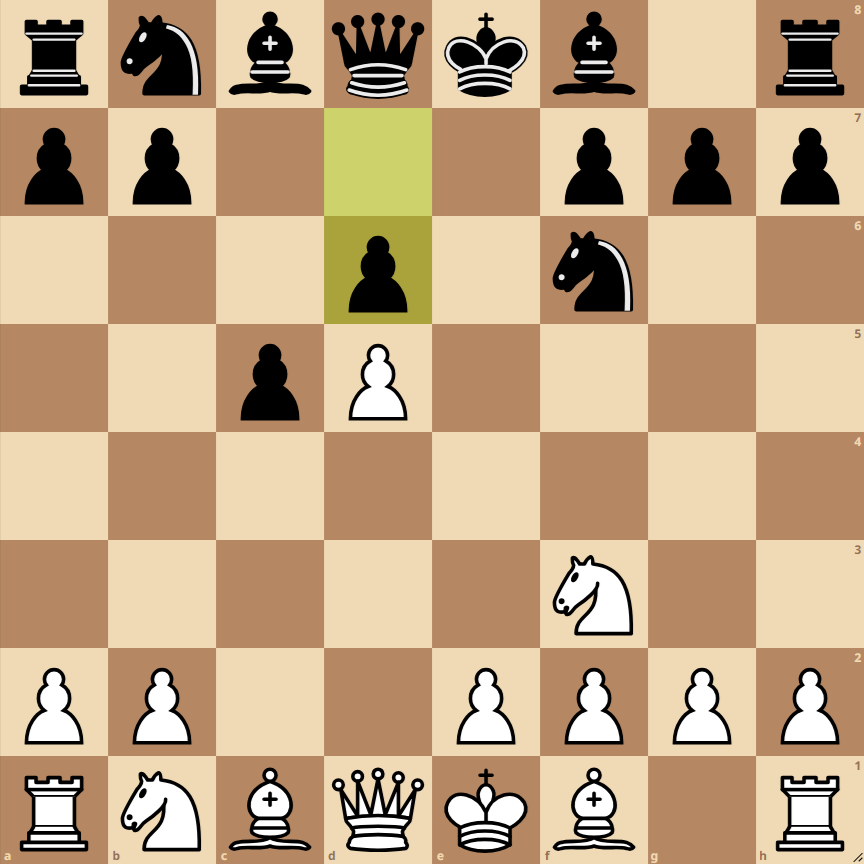
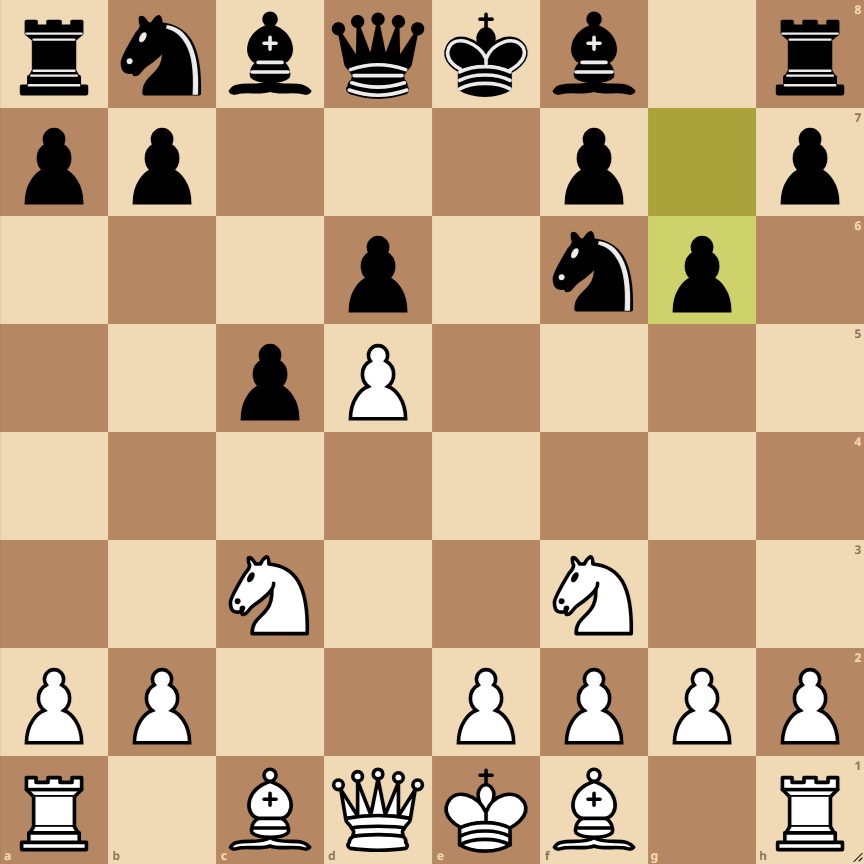
Modern Variation
In the Modern Variation, Black may choose to play …a6 and …b5 in an attempt to gain space on the queenside and challenge the White center from the side. This variation seeks a rapid expansion and activation of Black’s pieces on the queenside.
Fianchetto Variation
The Fianchetto Variation is characterized by the moves g3 followed by Bg2 by White, aiming to strengthen their center and control long diagonals. This variation emphasizes a more positional game and strong central pressure from a distance.
Taimanov Variation
The Taimanov Variation introduces a quick Nbd7 and sometimes e5 by Black, aiming to directly challenge the White center and open lines for their bishops and rooks. This variation favors dynamic and active play for Black’s pieces.
The Benoni Defense, Traditional Classical Variant
It is characterized by dynamic play and complex strategies for both sides. After the moves 1. d4 Nf6 2. c4 e6 3. Nf3 c5 4. d5 exd5 5. cxd5 d6 6. Nc3 g6 7. e4 Bg7 8. Be2,
White has established a strong center with pawns on d5 and e4, while Black has opted for a flexible setup that allows them to counterattack on the queenside and focus their operations on controlling dark squares, especially through their dark-squared bishop.
For White:
Strategy: White aims to capitalize on their additional space and central control, maintaining pressure in the center and on the kingside. Advancing the d5 pawn grants White some spatial advantage that they can use to maneuver their pieces into offensive positions. Placing the bishops on e2 and possibly g5 (attacking the knight on f6) can prepare the ground for actions in the center and on the kingside.
Tactics: A common tactical theme for White includes sacrifices on h7 followed by king-side attacks if Black doesn’t play carefully. Furthermore, controlling the open c-file can be crucial for offensive activities, especially if Black weakens their queenside pawn structure.
For Black:
Strategy: Black seeks to counterbalance White’s spatial advantage with active play on the queenside and in the center. Moves like …a6 and …b5 aim to expand on the queenside and challenge White’s pawn structure. The bishop on g7 is a key piece, supporting the center and possible pawn advances on the kingside.
Tactics: Black can look for opportunities for piece activity through …f5 at the right moment, aiming to open the center and activate their pieces. Exchanging on d5 can open lines for Black’s rooks and the bishop on g7. Additionally, a timely …Bg4 can pressure the e4 pawn and complicate White’s development.
Suggested Moves:
For White: O-O is a solid move, completing development and placing the king in safety. Subsequently, White may consider maneuvers like Re3, followed by Qd2 and Rad1, reinforcing the center and preparing for possible kingside advances or actions on the queenside.
